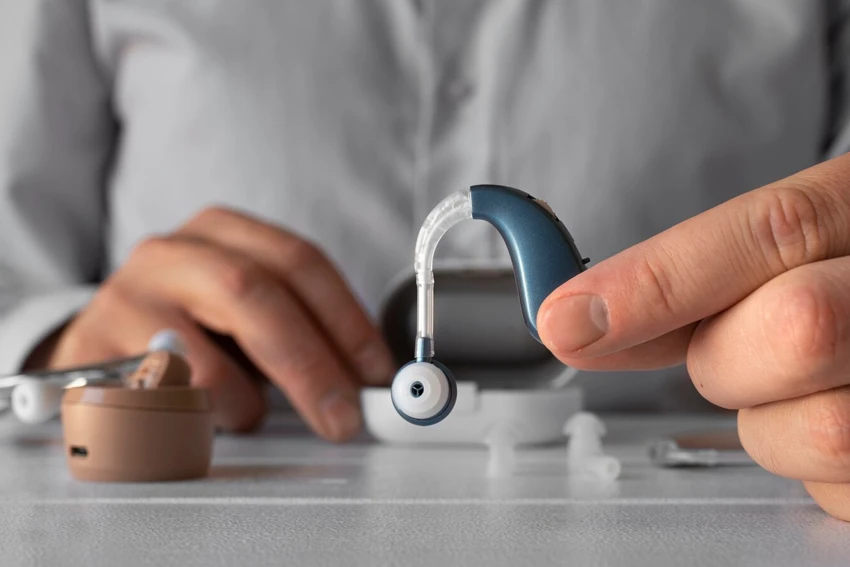Hearing Aid Maintenance

Hearing Aid Maintenance Guide
Hearing aids are sophisticated devices that enhance hearing and improve quality of life. Proper maintenance is crucial to ensure their longevity and optimal performance. This guide provides essential tips for maintaining your hearing aids effectively.
1. Daily Cleaning
a. Use a Soft Cloth
- Wipe the exterior of your hearing aids daily with a soft, dry cloth to remove dirt, wax, and moisture.
b. Avoid Moisture
- Keep your hearing aids away from water and moisture. Remove them before showering, swimming, or exercising.
c. Wax Guard Maintenance
- Regularly check and replace wax guards to prevent earwax buildup from blocking sound output.
2. Storage
a. Drying Kits
- Use a drying kit or a dehumidifier specially designed for hearing aids to remove moisture overnight.
b. Safe Storage
- Store your hearing aids in a cool, dry place when not in use. Avoid leaving them in direct sunlight or in hot areas, such as a car.
c. Battery Removal
- If you won’t be using your hearing aids for an extended period, remove the batteries to prevent leakage.
3. Battery Care
a. Choose the Right Battery
- Use high-quality batteries recommended by your hearing aid manufacturer. Check the expiry date before use.
b. Battery Handling
- Always handle batteries with clean, dry hands to avoid contamination. Store batteries in a cool, dry place.
c. Battery Life Monitoring
- Regularly check the battery life and replace them as needed. Consider using a battery tester for accuracy.
4. Regular Check-ups
a. Professional Maintenance
- Schedule regular appointments with your audiologist or hearing aid specialist for professional cleaning and maintenance.
b. Functionality Checks
- During check-ups, ensure that all components are functioning correctly, including microphones, receivers, and amplifiers.
c. Software Updates
- Ask your audiologist about software updates for digital hearing aids to ensure you have the latest features and improvements.
5. Handling and Usage
a. Proper Insertion
- Follow the manufacturer’s instructions for inserting and removing your hearing aids to avoid damage.
b. Avoid Excessive Force
- Be gentle when adjusting or handling your hearing aids. Avoid pulling on wires or using excessive force.
c. Educate Yourself
- Read the user manual thoroughly to understand your device’s features, settings, and maintenance requirements.
6. Troubleshooting Common Issues
a. No Sound
- Check if the hearing aid is turned on and the battery is functioning. Ensure the volume is set appropriately.
b. Distorted Sound
- Clean the microphone and receiver openings. Check for any blockages or damage.
c. Feedback Noise
- Adjust the fit of your hearing aid. Ensure that it sits securely in your ear and that there are no obstructions.
7. Lifestyle Considerations
a. Active Lifestyle
- If you lead an active lifestyle, consider investing in hearing aids with sweat-resistant features.
b. Environmental Factors
- Be mindful of environmental factors like dust, humidity, and temperature changes that can affect your hearing aids.
c. Travel Tips
- When traveling, pack your hearing aids in your carry-on luggage and keep them in a protective case.
Maintaining your hearing aids is essential for ensuring their effectiveness and longevity. By following these maintenance tips, you can enjoy clear sound and enhance your overall hearing experience. If you encounter any issues or have questions, don’t hesitate to reach out to your audiologist or hearing aid provider for assistance.
If you would like more information or would like to schedule an appointment, you can contact us via the Contact page. You can also click here to find our address on Google Maps and visit our nearest center for detailed information about hearing testing. Contribute to your children’s development by prioritizing their health!
